
It’s that time of year again when we need to start preparing for back to school. Some children/young people particularly those with autism find handling anxiety about the unknown to be exceedingly difficult. While it is natural for your child to feel apprehensive, some of these fears and anxieties can be alleviated by planning the return to school. I’ve put together some tips to help make the transition process as smooth as possible.
You know your child best so follow your instincts, feel free to use one, two or a few of the suggestions and adjust them to suit your child’s needs.
Reflect on the school holidays
To kick start the transition process, talk to your child about activities they took part in over the holidays. Ask them what they enjoyed doing, what could have been better and why. This can be reviewing a holiday diary they may have made, having a general discussion or drawing pictures of their best moments. Involve any siblings where possible because it can be a wonderful opportunity for a social and listening skills activity. In our house we made posters and reviewed places they visited. My daughter loves glitter, as you can see!
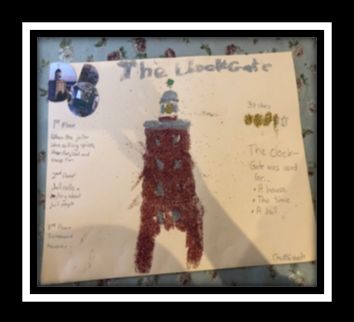
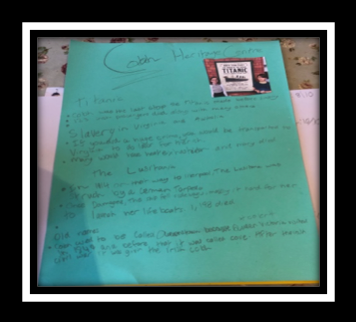
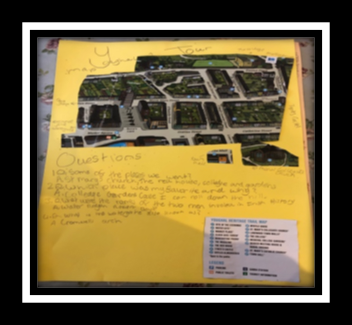
Find out how your child is feeling
A new school, new classroom, new teacher and possibly new classmates, can present a whole new set of unfamiliar territory all at once. Understandably, in the run up to school starting, your child may experience a mixture of emotions. Reassuringly talk to your child about their feelings, as it can help them think about the forthcoming changes. Remind them of the things that will remain the same and that not all things will change. For example, remind them that break time will be the same, they will be with the same friends, they will travel to school the same way.
For autistic children, talking about our feelings can be quite problematic, because many are continually supported to develop their emotional intelligence and interpersonal skills to express their true feelings. To help your child, you can draw, colour or make a collage to represent different emotions. Then communicate whilst using the drawing/collage that it’s okay to have feelings about the changes.
If your child is familiar with using strategies such as deep breathing exercises, using fidget toys, mindfulness etc. during times of anxiety, it may be useful to remind them of these strategies.
Arrange Playdates
Another back to school transition activity can be too organise playdates with classmates or school peers throughout the holidays. Often children do not see familiar faces from school over the holidays and can feel overwhelmed by class dynamics and different personalities when they return to school.
By keeping in contact with 1 or 2 parents and arranging a couple of playdates or short telephone/facetime/Skype conversations, it can enhance their social skills, help ease the child into the new term.
Prepare a Social Story
A social story is a set of short descriptions of a particular event or activity, informing the reader what to expect in that situation and why. By preparing a social story, you can visually inform your child about the new school year.
Work together with your child to find photos or draw pictures of their new school, new teacher, classroom and wider school community. Show a calendar month within the social story highlighting the school start date and brief timings of the school day. Next, place these items into a book or onto a PowerPoint. If at all possible, have your child meet the teacher prior to the start of school. Remember to take his or her photo and add it to your social story.
Write short simple descriptions about each visual e.g. “This is Miss Murphy, your new Teacher” , “This is your primary school” , ‘This is your class room”.
Most schools have website or Facebook pages, so it could be useful to look at these with your older child.
There is a lovely free social story about going back to school available here and here.
Shopping for school items
Shopping with your child for a new school uniform, footwear and any accessories can also be a good transition activity. Get them to try on the new uniform and discuss their thoughts. Ask your child to pick out any accessories for themselves so they can take ownership. Preparing uniforms and school items can help your child start to process emotions and get into the mind-set of going back to school.
If your child hates the ‘feel’ of a shirt, you can buy ‘skins’ (base layer) that they can wear under the shirt to make it feel more comfortable, like this one.
Marks and Spencer also do seamless socks and underwear and have an easy dressing section.
Reintroduce routines
Gradually start to bring back home routines a week or so before school starts. In particular bedtimes for school nights, morning wake up routines and walking/driving to school. In addition, creating checklists or visual timetables of morning and afternoon activities can encourage organisation skills and boost self-esteem, particularly if there are built in rewards/incentives for the child upon completion.
A week or so before returning to school, begin waking up your child a little earlier each morning so that he or she has adjusted to the new wake-up time. Do a few “run-throughs” near the end of summer holidays so your child knows what to expect before leaving for school. If your child responds well to visual schedules, create one outlining everything from getting dressed to going on the bus/into the car.
Here is the one I use:
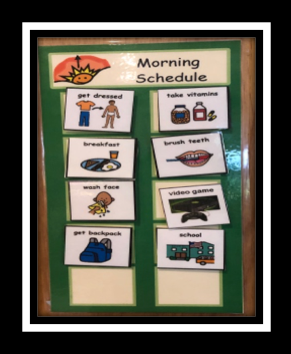
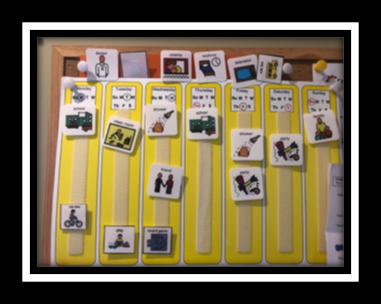
Cross days off on your calendar can be a useful visual support. Some children may have anxiety about when the school year begins. Simply crossing days off the calendar may help your child better understand when the school year starts. When my kids were younger I had a “how many sleeps” visual now I have an A3 August Calendar printed and hung in the kitchen where we can all see the date we return to school!
Communication with School
If the new teacher is unfamiliar with your child, write them a letter outlining your child’s strengths, areas of difficulty, possible sensory issues, dietary restrictions, triggers for behaviour, and favourite reinforcers. Remember to send a copy to any school staff that are working with your child for example learning support/resource teachers. It is very helpful to teachers to have a “snapshot” of your child prior to teaching them.
If relevant for your child, ensure that any behaviour plans are in place from day one. If your child has a plan that’s been working for them ask that it be shared with the new teacher and others working with your child and implemented immediately at the start of the year.
If your child uses an augmentative device to communicate, make sure all of the adults in the classroom are familiar with it. Many augmentative devices require some instruction on how to use them.
If your child has sensory issues make sure he or she has a favourite sensory item available from the first day. For children who struggle from sensory overload, certain objects can offer a great deal of comfort. Make sure your child will have at least one available at all times and be sure that the SNA and class teacher are aware of the significance of this item/s.
My sons favourite thing to fidget with was blu-tac. We made a contract for him regarding how and when it could be used, as he was more interested in making blu-tac people and playing with them! The contact was signed by the class teacher and him and reviewed regularly!
If your child is travelling by bus or taxi, ask to meet the bus/taxi driver, so your child feels comfortable going with them.
Finally, I hope the above tips are useful and helps strengthen your child’s character and builds resilience for what lies ahead.
‘Til next time 😊
Frances
